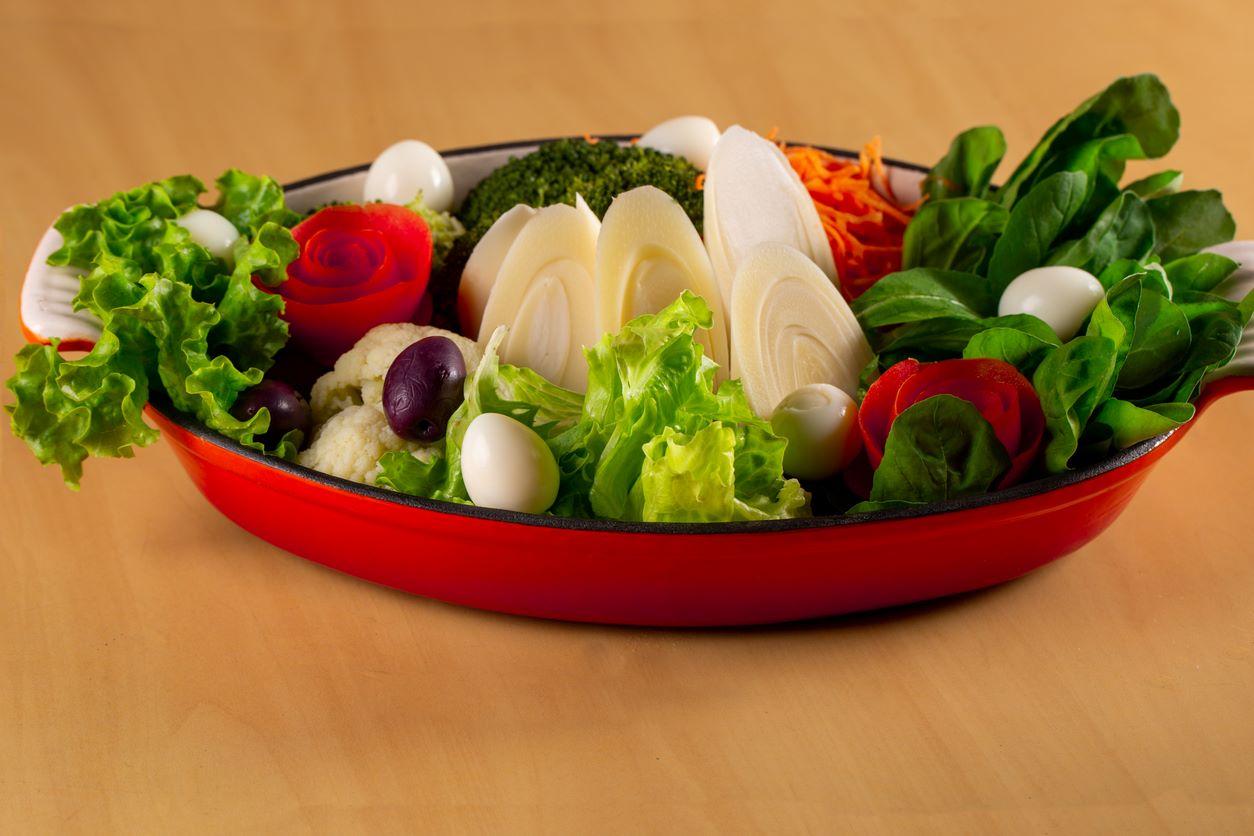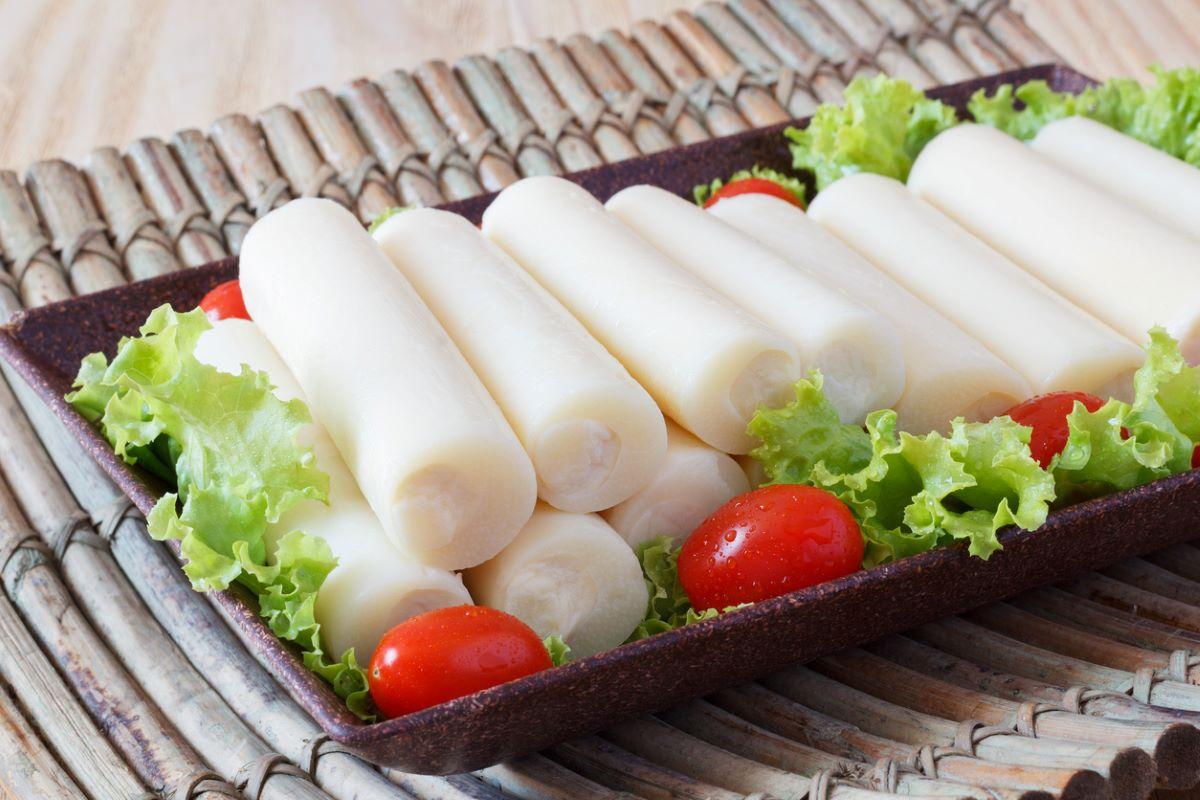What Does Hearts Of Palm Taste Like? A Flavor Deep Dive For Curious Cooks
Have you ever spotted a can of hearts of palm at the grocery store and wondered what exactly it is, or perhaps, what does hearts of palm taste like? For many home cooks and food adventurers, this unique vegetable remains a bit of a mystery. It's a truly interesting ingredient, and honestly, figuring out its flavor profile can really open up new culinary paths for you. So, if you're curious about adding something new to your meals, or just want to understand this intriguing food better, you've come to the right spot. We're going to explore its taste, texture, and how it can brighten up your kitchen today.
Hearts of palm, you know, it’s actually the edible inner core of certain palm trees, often harvested from species like coconut palms or peach palms. It's a popular ingredient in many parts of the world, particularly in South and Central America, where it's been enjoyed for ages. People often find it in salads, but its versatility goes way beyond that, honestly. It’s got a subtle charm that makes it a fantastic addition to all sorts of dishes, and it's quite healthy, too.
The growing interest in plant-based eating and exploring new flavors has certainly put hearts of palm more into the spotlight lately. It's becoming a go-to for folks seeking wholesome, versatile ingredients that can stand in for other things or simply add a fresh twist. Understanding what does hearts of palm taste like is the first step to truly appreciating its place in your cooking, and we'll cover all that and more right here, as a matter of fact.
- Discover The Untold Story Of Gymnastics Legend Olga Korbut
- Robert Prevost Donald Trump
- Unveil The Hidden Uncover The Untold Truths That Will Reshape Your World
- Unlocking The Secrets Is Scottie Scheffler Married
- Unveiling Political Strategies With Lucy Caldwell
Table of Contents
- The Taste Profile Unpacked: What Does Hearts of Palm Taste Like?
- Texture and Mouthfeel: More Than Just Taste
- Culinary Uses and Pairings: How to Enjoy Hearts of Palm
- Nutritional Benefits: Why It's Good for You
- Sourcing and Storage: Finding and Keeping Hearts of Palm
- Frequently Asked Questions About Hearts of Palm
- Conclusion: Embrace the Palm
The Taste Profile Unpacked: What Does Hearts of Palm Taste Like?
When you first try hearts of palm, you might be surprised by its very mild and somewhat delicate flavor. It's not a powerful taste, which is actually one of its biggest strengths, you know. Many people describe it as having a gentle, slightly sweet, and faintly nutty quality. It’s got this clean, fresh taste that doesn't overwhelm other ingredients in a dish, which is pretty useful.
A common comparison, and it's a good one, is to artichoke hearts, especially the canned kind. There’s a similar mild tang and a very slight earthiness. Some folks also say it reminds them a bit of white asparagus, or even water chestnuts, particularly because of its subtle crispness. It’s a flavor that plays well with others, allowing it to absorb and complement the tastes around it, which is quite nice, really.
You won't find any strong bitterness or an overly acidic punch here. Instead, it’s a rather neutral canvas, ready to take on the flavors of dressings, spices, or sauces. This makes it incredibly versatile for all sorts of recipes. So, if you're looking for an ingredient that adds a quiet, pleasant background note rather than a dominant one, hearts of palm could be just what you need, honestly.
- Unveiling The Legacy Of Rodolfo Mrquez A Journey Into Mexican Art
- Unveiling Julianne Phillips Beyond The Spotlight Of The Wife Of Bruce
- Shemar Moore And Sanaa Lathan Uncovering Their Impact And Legacy
- Unveiling The Reasons Behind Mariahs Departure From Married To Medicine A Journey Of Discovery
- Andrew Kojis Wife Uncovering The Hidden Truth
The subtle sweetness is often the first thing people notice, followed by that hint of nuttiness. It’s not like eating a pecan, of course, but there’s a distant, almost creamy, nutty whisper there. This makes it particularly appealing in fresh salads or as a simple snack. It's a taste that tends to be universally liked because it’s so unobtrusive, and that’s a big plus, frankly.
Sometimes, depending on how it’s processed, you might pick up a very faint briny note, especially if it comes from a can. This is just from the preserving liquid, though, and it usually washes away easily. The fresh taste is always there, underneath, making it a very refreshing component in many dishes, you know, almost like a crisp, mild vegetable. It's quite versatile in that way, too.
Texture and Mouthfeel: More Than Just Taste
Beyond its flavor, the texture of hearts of palm is a huge part of its appeal, and it's something people often talk about. When you bite into it, you’ll find it’s tender, yet it has a satisfying, almost crisp bite. It's not mushy at all, which is a common concern with canned vegetables, but this isn't that at all, really.
It’s often described as having a flaky or stringy quality, but not in a bad way. Think of it more like a delicate celery or a very tender artichoke heart. It separates easily into layers when you pull it apart, which adds to its interesting mouthfeel. This unique texture makes it a great addition for adding some variety to your dishes, frankly.
The slight crunch gives it a pleasant resistance, especially when it’s cold, like in a salad. When cooked, it softens up a bit but still holds its shape quite well. This makes it suitable for both raw and cooked applications, which is pretty handy. It’s that combination of tender and slightly firm that truly sets it apart from other vegetables, in a way.
It’s not watery, and it doesn't have a slimy feel, which is important for many people. Instead, it’s got a clean, firm structure that feels good to eat. This texture is why it works so well as a stand-in for things like seafood in plant-based recipes, because it mimics that flakiness. So, if you're looking for something with a bit of a bite but still tender, this is it, you know.
The way it feels in your mouth is just as important as its flavor, especially for a vegetable that’s so mild. That distinctive tender-crispness makes it a really enjoyable ingredient to eat, whether it’s chopped up small or served in larger pieces. It provides a nice contrast in dishes, which is actually a big deal for texture variety, anyway.
Culinary Uses and Pairings: How to Enjoy Hearts of Palm
Because of its mild flavor and interesting texture, hearts of palm are incredibly versatile in the kitchen. You can use them in so many different ways, which is honestly one of their best features. They adapt well to various cuisines and cooking methods, making them a really flexible ingredient to have on hand, more or less.
Salads and Cold Dishes
This is probably the most common way people enjoy hearts of palm, and for good reason. Their fresh, mild taste and tender-crisp texture make them a perfect addition to a wide range of salads. They add a refreshing element without overpowering other ingredients, which is pretty useful, you know.
- Green Salads: Just slice them into rounds or half-moons and toss them with your favorite greens, cherry tomatoes, cucumbers, and a light vinaigrette. They add a lovely, subtle crunch.
- Seafood-Style Salads: They’re often used as a plant-based alternative to crab or lobster in "mock" seafood salads. Mix chopped hearts of palm with vegan mayonnaise, celery, and seasonings for a surprisingly convincing texture.
- Ceviche: In vegetarian or vegan ceviche, hearts of palm can be "marinated" in citrus juices with red onion, cilantro, and chili for a bright, zesty dish. It’s really quite good, actually.
- Antipasto Platters: Serve whole or halved hearts of palm alongside olives, roasted red peppers, and marinated artichokes for a delightful appetizer spread. They fit right in, in a way.
Cooked Applications
While often eaten cold, hearts of palm also stand up well to heat. They can be sautéed, grilled, or baked, taking on new dimensions of flavor and texture when cooked. This really expands their utility in the kitchen, you know, making them more than just a salad topping.
- Stir-Fries: Add sliced hearts of palm towards the end of a stir-fry for a tender, slightly sweet element. They absorb the flavors of the sauce beautifully.
- Sautéed Sides: Lightly sauté hearts of palm with garlic, butter (or a plant-based alternative), and herbs for a simple, elegant side dish. It’s a quick and easy way to prepare them, frankly.
- Grilled: Whole hearts of palm can be brushed with olive oil and grilled until lightly charred for a smoky flavor and tender interior. This is a fantastic way to bring out their sweetness, too.
- Soups and Stews: While less common, chopped hearts of palm can be added to light, brothy soups or stews for extra texture and a mild flavor. They hold their shape quite well, which is helpful.
Plant-Based Alternatives
One of the most exciting trends for hearts of palm is their use as a low-carb, plant-based alternative to grains and pasta. This is where their unique texture really shines, and it's become quite popular, as a matter of fact.
- "Pasta" and "Rice": You can find hearts of palm "pasta" noodles or "rice" already pre-cut, or you can make your own by shredding them. They’re a fantastic, gluten-free, and low-calorie base for sauces.
- "Fish" or "Crab" Cakes: Their flaky texture makes them an excellent substitute for seafood in plant-based "crab" or "fish" cakes. Just mash them up and mix with binders and seasonings.
- Tacos and Wraps: Sautéed and seasoned hearts of palm can be a delicious filling for vegetarian tacos, burritos, or lettuce wraps. They absorb spices really well, you know.
Nutritional Benefits: Why It's Good for You
Beyond its appealing taste and versatile texture, hearts of palm also bring some good nutritional value to your plate. It's a healthy choice for adding volume and nutrients to your meals without a lot of calories, which is pretty great, you know.
It's notably low in calories and fat, making it a wonderful option if you're watching your intake. A typical serving contains very few calories, yet it's surprisingly filling, thanks to its fiber content. This is a big win for healthy eating, frankly.
Hearts of palm are a good source of dietary fiber, which is important for digestive health and can help you feel full and satisfied. This fiber also contributes to stable blood sugar levels. So, it's not just tasty, it's actually doing some good for your body, too.
You’ll also find some essential minerals in hearts of palm, including potassium, which is vital for blood pressure regulation, and zinc, important for immune function. It also offers a bit of vitamin C and some B vitamins. It's a small but mighty package of goodness, in a way.
For those following specific diets like keto or gluten-free, hearts of palm are an excellent choice because they are naturally low in carbohydrates and completely free of gluten. This makes them a very flexible ingredient for a wide range of dietary needs, which is quite useful, honestly. To learn more about the health aspects of various vegetables, you could check out reputable nutrition sites, for instance, a site like Healthline's insights on hearts of palm.
Sourcing and Storage: Finding and Keeping Hearts of Palm
Finding hearts of palm is usually pretty straightforward, and knowing how to store them ensures you always have them ready when inspiration strikes. They are typically sold in cans or jars, which makes them very convenient to keep on hand, as a matter of fact.
Most grocery stores, even smaller ones, will carry canned hearts of palm. You’ll usually find them in the canned vegetable aisle, often near artichoke hearts or specialty vegetables. They are usually packed in water or a light brine. So, they're pretty accessible, you know.
For a fresher option, some specialty stores or international markets might offer fresh hearts of palm, though these are much less common and usually pricier. If you do find them fresh, they’ll look like thick, white cylinders, and they'll have a slightly firmer texture. They’re a real treat if you can get them, honestly.
Once you open a can or jar of hearts of palm, any unused portion should be transferred to an airtight container and refrigerated. They will stay fresh for about three to five days this way. It’s important not to leave them in the original can, as that can affect their flavor and safety, which is a pretty good tip, anyway.
Unopened cans or jars of hearts of palm have a very long shelf life, often several years, making them a great pantry staple. This means you can stock up when they’re on sale or when you just want to have them ready for a quick meal. They’re very convenient in that respect, too.
Frequently Asked Questions About Hearts of Palm
Are hearts of palm a vegetable?
Yes, absolutely, hearts of palm are considered a vegetable. They come from the inner core of certain palm trees, making them a plant-based food source. They're typically harvested from the very center of the palm, which is why they have that unique, tender texture, you know.
Can you eat hearts of palm raw?
You can definitely eat hearts of palm raw, and many people prefer them that way, especially in salads. When raw, they have a crispier texture and a very fresh, mild flavor. They don't need cooking before you enjoy them, which is pretty convenient, actually.
What is a good substitute for hearts of palm?
If you can't find hearts of palm, or just want something similar, artichoke hearts are often considered the best substitute. They share a similar mild, slightly tangy flavor and a tender texture. Water chestnuts can also work if you're mainly looking for a crisp texture in a dish, you know, though their flavor is a bit different.
Conclusion: Embrace the Palm
So, what does hearts of palm taste like? It's a mild, slightly sweet, and faintly nutty flavor with a wonderfully tender yet crisp texture, similar to artichoke hearts or white asparagus. This makes it an incredibly adaptable ingredient for all sorts of dishes, from fresh salads to plant-based "pasta" alternatives. Its subtle charm and versatility truly make it a standout in the world of vegetables, honestly.
We've talked about its delicate flavor, its satisfying mouthfeel, and the many ways you can bring it into your kitchen, whether raw or cooked. It's a healthy addition, packed with fiber and minerals, and it's super easy to find and store. There’s really no reason not to give it a try, you know, especially with all the new plant-based cooking ideas out there.
Now that you have a clearer picture of what hearts of palm offers, why not grab a can or jar on your next grocery trip? Experiment with it in your favorite salad, try it in a stir-fry, or even make some delicious plant-based "crab" cakes. You might just discover a new favorite ingredient that brings a fresh, exciting twist to your meals. Learn more about hearts of palm on our site, and find some amazing recipes by linking to this page here.
- Unveiling The Extraordinary Journey Of Jeffrey Bruce Livingston
- Louise Meldrum Uncovering The Secrets Of Success And Impact
- Unveiling The Power Discover The Functionality Of Bdnaashcom
- Unveiling Natasha Yis Net Worth Unlocking Financial Insights
- Unveiling Julianne Phillips Beyond The Spotlight Of The Wife Of Bruce

What Does Hearts of Palm Taste Like? How to Cook It

What Does Hearts of Palm Taste Like? How to Cook It

What Does Hearts of Palm Taste Like? How to Cook It